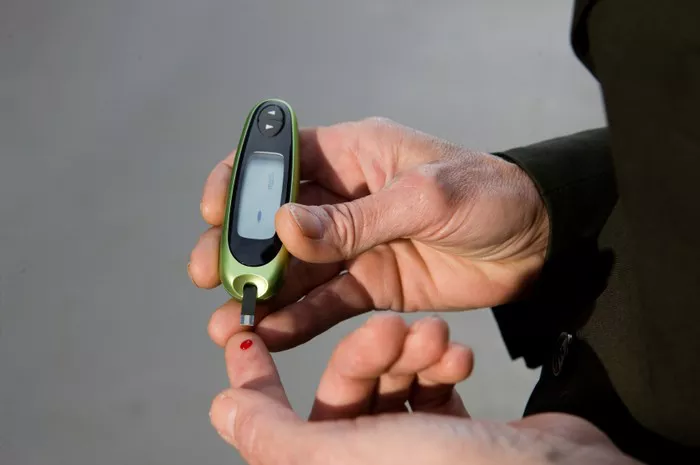When it comes to diabetes, one term that frequently arises is “autoimmune diabetes.” While many are familiar with diabetes as a metabolic disorder characterized by high blood sugar levels, the autoimmune aspect adds a layer of complexity to the condition.
In this article, we will delve into the intricacies of autoimmune diabetes, exploring its definition, causes, types, diagnosis, treatment, and implications for those affected.
What Is Autoimmune Diabetes?
Autoimmune diabetes is a collective term used to describe a group of diseases characterized by the immune system mistakenly attacking and destroying insulin-producing cells in the pancreas.
This autoimmune attack leads to a deficiency in insulin production, resulting in impaired glucose metabolism and elevated blood sugar levels. The two primary forms of autoimmune diabetes are type 1 diabetes and latent autoimmune diabetes in adults (LADA).
The Prototypical Autoimmune Diabetes
Type 1 diabetes, often referred to as insulin-dependent diabetes or juvenile-onset diabetes, is the quintessential autoimmune diabetes.
In individuals with type 1 diabetes, the immune system launches an autoimmune attack against the beta cells of the pancreas, which are responsible for producing insulin. This attack results in the destruction of beta cells, leading to an absolute deficiency of insulin and the need for lifelong insulin therapy.
Latent Autoimmune Diabetes in Adults (LADA)
Latent autoimmune diabetes in adults (LADA) is a lesser-known form of autoimmune diabetes that shares features of both type 1 and type 2 diabetes.
Unlike classic type 1 diabetes, LADA typically develops in adulthood and progresses more gradually. Individuals with LADA initially retain some residual insulin production and may not require insulin therapy immediately upon diagnosis.
However, over time, beta cell function declines, and insulin therapy becomes necessary for blood sugar control.
What Triggers Autoimmune Diabetes?
The development of autoimmune diabetes is believed to be influenced by a combination of genetic predisposition and environmental factors.
Certain genetic variants increase susceptibility to autoimmune diseases, including diabetes, while environmental triggers such as viral infections, dietary factors, and exposure to toxins may activate the immune system and precipitate the autoimmune response.
The interplay between genetics and the environment remains an area of active research in the field of autoimmune diabetes.
Diagnosing Autoimmune Diabetes
Diagnosing autoimmune diabetes involves a comprehensive evaluation of clinical symptoms, laboratory tests, and autoimmune markers.
Common symptoms of autoimmune diabetes include excessive thirst, frequent urination, unexplained weight loss, fatigue, and blurred vision. Laboratory tests, such as blood glucose measurements and autoantibody assays, help confirm the diagnosis and differentiate between type 1 diabetes, LADA, and other forms of diabetes.
Treatment Options
Managing autoimmune diabetes requires a multifaceted approach aimed at controlling blood sugar levels, preventing complications, and improving quality of life. Treatment modalities for autoimmune diabetes may include insulin therapy, blood sugar monitoring, dietary modifications, regular exercise, and medication management.
In type 1 diabetes, insulin therapy is the cornerstone of treatment, while individuals with LADA may initially respond to oral medications before transitioning to insulin as beta cell function declines.
Advances in Autoimmune Diabetes
The landscape of autoimmune diabetes is continually evolving, with ongoing research efforts focused on elucidating disease mechanisms, identifying novel therapeutic targets, and developing innovative treatment modalities.
Recent advancements in immunotherapy, stem cell transplantation, and beta cell regeneration hold promise for revolutionizing the management of autoimmune diabetes and ultimately finding a cure.
Diabetes Community
In the diabetes community, support and advocacy play vital roles in empowering individuals affected by autoimmune diabetes.
Support groups, educational resources, and advocacy organizations provide valuable assistance, guidance, and encouragement to those navigating the challenges of living with autoimmune diabetes.
By fostering a sense of community, raising awareness, and advocating for improved access to care, the diabetes community works together to support and uplift individuals affected by autoimmune diabetes.
Conclusion
In conclusion, autoimmune diabetes encompasses a spectrum of conditions characterized by the immune system’s misguided attack on pancreatic beta cells. Type 1 diabetes and LADA represent two distinct manifestations of autoimmune diabetes, each with its unique clinical features and management considerations.
Through research, education, advocacy, and support, we can continue to advance our understanding of autoimmune diabetes and strive towards a future free from its burdens.



























